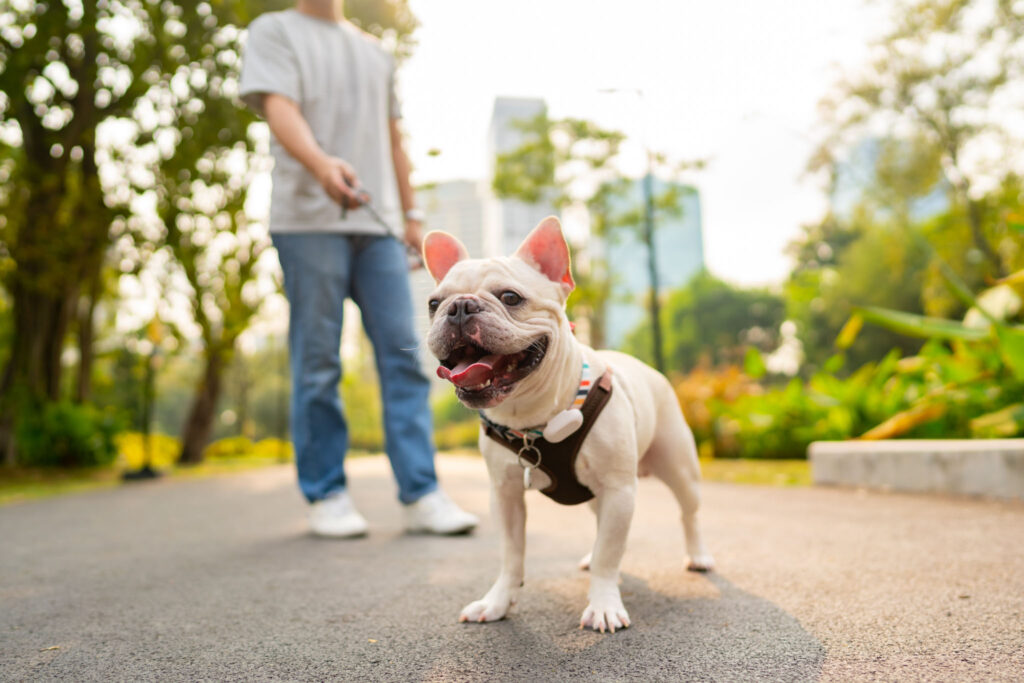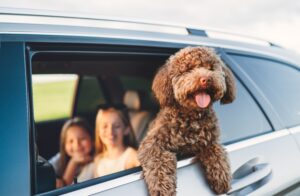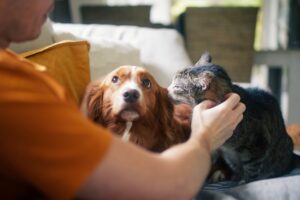You probably heard it repeatedly right around the Fourth of July in relation to fireworks—leave your pets at home. But the reason extends to more than just fireworks. Many dogs are frightened by loud noises and almost all aspects of a thunderstorm: wind, rain, thunder, lightning, and even atmospheric pressure. These fears can develop even if your dog has not had any traumatic experiences.
The level of anxiety your dog experiences depends on the individual dog. Some dogs whine and pace while others injure themselves trying to escape. The most common reactions to loud noises are destruction and running away or escaping. To reduce his fears, your dog might seek out a place where the thunder or loud sounds are less intense.
You can try a few different things to ease his fears. First is to create a “safe place” or somewhere that is safe for your dog to be and is readily accessible. Let him choose this place by seeing where he goes during a storm and making this a space he can retreat to when he is scared. Another option is to distract your dog. This works best when your dog is just beginning to get anxious. Engage your dog in an activity he likes that will capture his attention and distract him from the noises. This can mean a game of fetch, practicing behavioral commands, or even listening to calm music.
While it may seem counter-intuitive, do not attempt to reassure or soothe your dog too much when he is afraid. This includes over petting and giving him treats. Attempting to do so may reinforce the fearful behavior and make it worse. You should, instead, stay calm and as relaxed as possible.
Another interesting option is a snug-fitting garment or shirt, such as the ThunderShirt. Products like this apply gentle, constant pressure and are designed to calm anxious dogs. They have a calming effect similar to swaddling a baby. If you prefer to make your own, you can buy a small t-shirt and put your dog’s front legs through the armholes of the shirt. The shirt should fit snugly around your dog’s torso.
You can also try behavior modification. Counterconditioning is when the animal is taught to display acceptable behavior instead of the unacceptable one. You can do this by only playing your dog’s favorite game or giving him his favorite toy right before and during a storm. Another modification is desensitization. This is when your dog’s response is decreased while exposed to increasing levels of what they’re afraid of. For a noise phobia, start with the noise at a quiet level and work your way to a louder volume level. If you feel that his anxiety is out of control, consult your veterinarian as medication can be prescribed to temporarily alleviate your dog’s anxiety. Do not give your dog any over the counter or prescription medication without asking your vet first. What works for a human may be fatal to your dog.
If you have any concerns or questions, please give us a call at (703) 491-1111
Wyomissing Animal Hospital has provided superior veterinary care for small animals for more than twenty years. Founded by Dr. Boyd Wagner and Dr. John Hampson, the hospital now has eight doctors and over 50 staff members who are dedicated to providing professional and loving care to all of our patients. At Wyomissing Animal Hospital, we understand that your pets are your family. We provide both wellness care and medical treatment for your animals. Wyomissing Animal Hospital is accredited by the American Animal Hospital Association. AAHA accreditation recognizes our hospital’s commitment to meeting the highest quality standards of care – a recognition achieved by only 17% of small animal practices in the United States and Canada.




